Shelves are a convenient way to fill unused space and at the same time, have everything at hand. In this tutorial I will describe how to build a DIY kitchen shelf.

The most obvious thing to get first is some surface. Perfect choice will be wooden or plastic board, chipboard, plywood or thick MDF. There was some leftover white chipboard, so I used that.
Measure the size of the future shelf. Than measure it once again, just to be sure. According to the measurements, draw the shape of paper to get the best cut. In my case, I cut a 80x25cm board and a 25x40cm boards to get a L-shaped, 55x65x25cm shelf.
Don’t expect the cuts to be ideal: it is impossible to get no cracks the chipboard laminate without factory-grade tools. Use a handsaw and do slow, long, wide-angle cuts to get best results. We’ll deal with the cracks later.
Next, get some shelf brackets. They are available in different shapes and sizes, be sure your get brackets appropriate for the load. It’s best to choose a bracket with one end to fit the shelf surface, and the other at little longer, to minimize lever effect.
Next, get some screws, plugs and drills, according to the wall type you have. In my case, it was a plastic paneled brick wall, so I got dowels, a wood drill and a masonry drill.

Wood drills are pointed, and concrete drills have a little spade on tip.
Line up your first bracket and mark the hole for the uppermost screw. First I use a slightly wider than the dowel wood drill at low speed to cut of plastic.

Then change concrete drill, switch to hammer mode, and drill enough to fit the dowel. The drill diameter and length should correspond with the dowel dimensions. I.e., 6mm drill for 6 mm, 8mm for 8mm dowel and so on. Be sure to suck out the dust before inserting the plug.
To insert a dowel, first plug it by hand. Then hammer it with very light raps. In the end, you may need to a screw or similar item to finish inserting. Do not use much force! Perfect hole fits the dowel with light, but sensitive friction. That is true for many aspects of life.

Wooden plugs tend to crack over time, so the screws may come out under the load. So use plastic or metal dowels only.
Fix the bracket with only one upper screw, do not tighten. Do not drill other holes yet.
Now, take another bracket, the shelf surface, a bubble level and a pencil. Put one end of the board on the bracket, hold the other end with the unscrewed bracket in hand, and put the level on top of the shelf.

Monitoring the bubble, adjust the position of your hand and the orientation of the bracket on wall to get a prefect level. Fix it, draw the spots for other screws, remove everything. Now drill some more holes, and screw the brackets to the wall.
If you connect several boards on more than two brackets, be sure to level all of them:
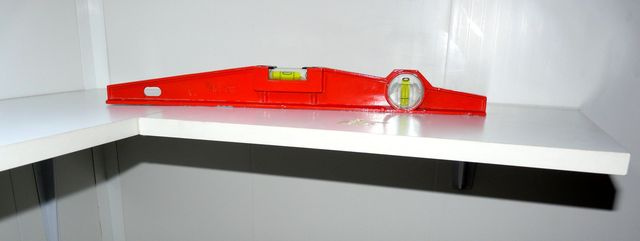
I used some old white brackets from another project, and one of them was cut. Soon more used brackets should come to replace the cut one, but for the time being, I just restored the paint job with correction fluid.

You may use it to paint the screws, especially if you use random coloured screws.
The next two steps are optional, but I recommend you to follow them. Well, try to put as much effort as you can when doing anything. If you’re not a professional or a genius, the result probably won’t be perfect anyway. But with effort, it will be at least presentable. Without effort, any job is not even worth starting.
The first step is to cover the side cuts of the chipboard with some waterproof solution. Any paint will do. I had some leftover parquet varnish, so I put two coats of it in one hour interval.

Since this is a kitchen shelf for drying plates, water could easily come to the sides. Chipboard swells from water, and this can render it beyond repair:
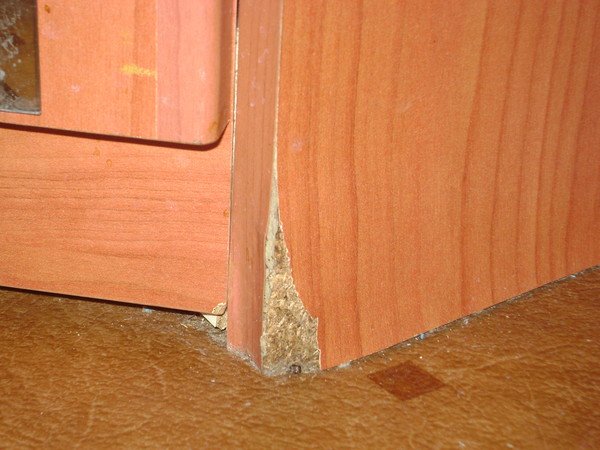
So cover the open sides with any solution that stops water.
The next step is connecting the two boards in one. This should make the shelf both more load effective and less prone to rolling over.
I had some leftover angle pieces. These are used mostly for wooden frames.
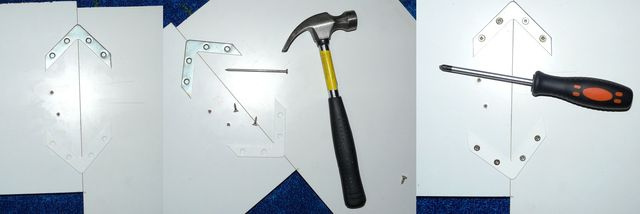
So, align the pieces on the brackets, mark the connection spots. Then lay the boards on flat surface, connecting them according to the markings you just made. Put the angles on. Get screws no longer than 2/3 of the board thickness. To drive a screw into chipboard, first drill a half way hole with 1mm screw at the desired location. Another technique is to start hammering a thicker nail. Do no more than 1-2 light raps, just enough to ger through the laminate. The holes will align the screws, so put and tighten them.
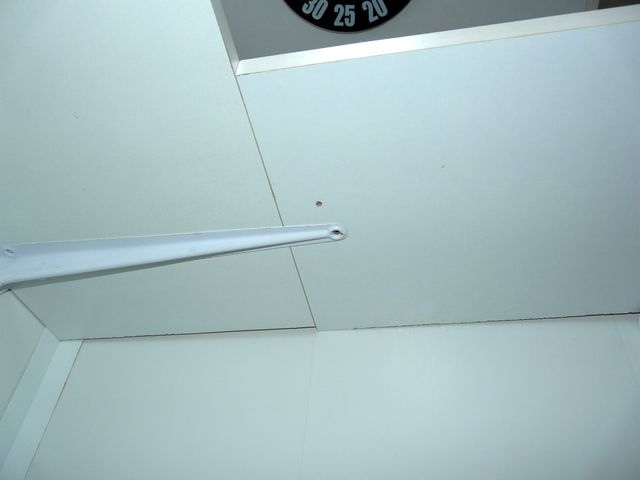
Now, put the board on to the wall brackets, align and mark the holes.
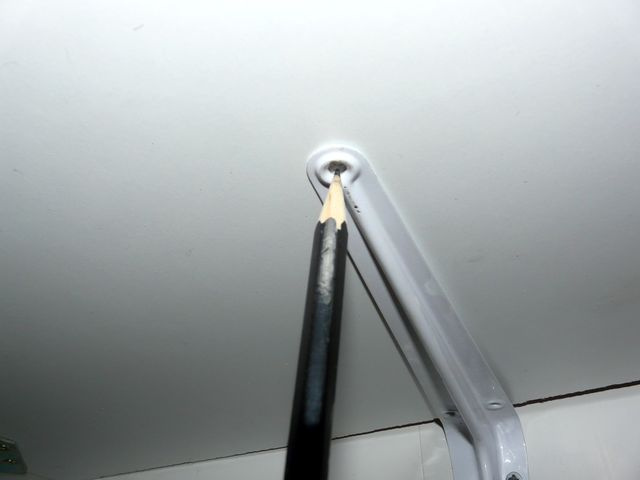
Punch some half way holes as described above and screw the board to the brackets.
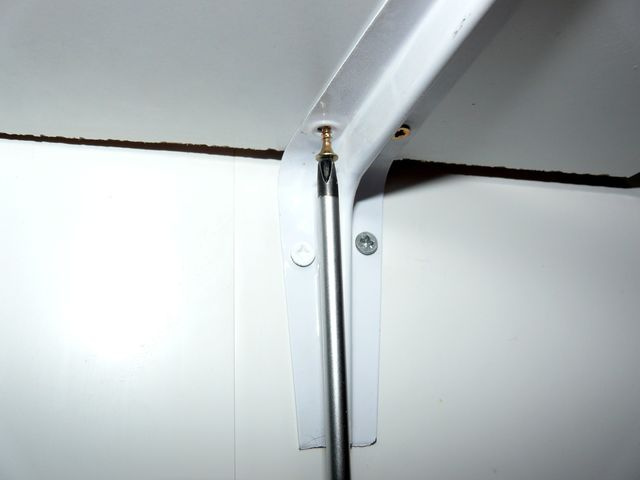
You may already use the shelf, however, I’ll add some final streaks, to hide those cracks of our amateur cuts.
Use silicone to cover the gaps between the board and the wall. This will also cover the cracks from the saw. Apply silicone with a dispenser, and then soak your finger in soapy water and gently wipe the seam all the way through to make an even look.
If you plan to use the shelf in dump envinroment like bathroom or kitchen, you may also wish to cover front and sides with plastic L-profile shapes.

Cut to measure, apply superglue and hold them in place while the glue cures. This will make chipboard angles waterproof.

You new shelf is ready!